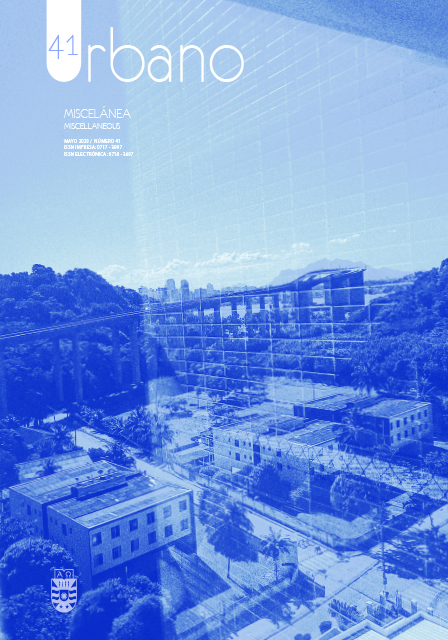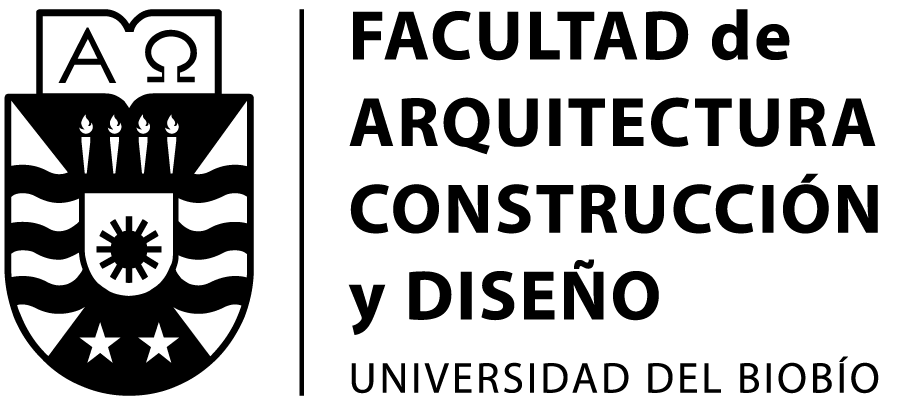Measuring loss of access to the land and its impact on place attachment: The case of the historical mining community of Puchoco, Chile
DOI:
https://doi.org/10.22320/07183607.2020.23.41.06Keywords:
access loss, mining heritage, place attachment, cultural landscape, land use changeAbstract
Landscape change is a key variable in place attachment and identity. Moving on from previous studies in the field of landscape and planning research, this paper specifically aims to explore the impact of loss of access to urban green and open space on memories and emotional connections to place. These issues were examined in the context of a former coal mining community with strong social cohesion and local identity in order to analyze the impact of urban transformation on the past and present meanings of place for current inhabitants. Research methods involved a mixture of qualitative tools including focus groups, life narratives, blank mapping research, and cartographic analysis of land use change. Results present powerful evidence of the important detrimental effects that unplanned landscape change can have on everyday access to open spaces, and in consequence, on positive meanings of place. Moreover, these dynamics can deeply affect historical company towns undergoing processes of decay after industrial closure. In this sense, this study can contribute to developing recommendations for current planning practices within the context of heritage management.
Downloads
References
Astorquiza, O. (1942) Lota. Antecedentes históricos, Valparaíso, Chile, p. 24-26
Bamert, M., Ströbele, M. y Buchecker, M. (2016). Ramshackle farmhouses, useless old stables, or irreplaceable cultural heritage? Local inhabitants’ perspectives on future uses of the Walser built heritage. Land Use Policy, (55), 121–129.
Braceras, I. (2012) Cartografía participativa: herramienta de empoderamiento y de participación por el derecho al territorio. Tesis de Magíster. Universidad del País Vasco. Recuperado de http://biblioteca.hegoa.ehu.es/registros/19416.
Brito, A. (2018) Memoria colectiva y construccion del territorio: auge y despojo de una cultura industrial. Los casos de la fábrica textil Bellavista-Tomé y la Carbonífera Schwager en Coronel (1970-2007), Izquierdas, 42, 1-29.
Brown, B.B. (1987). Territoriality. En D. Stokols e I. Altman (Eds.), Handbook of environmental psychology (pp. 505–531). New York: Wiley.
Burgess, J. Harrison, C. y Limb, M. (1988). People, Parks and the Urban Green: A Study of Popular Meanings and Values for Open Spaces in the City. Urban Studies, 25(6)
Cornejo, M., Mendoza, F. y Rojas, R. (2008). La investigación con relatos de vida: pistas y opciones del diseño metodológico. Psykhe, 17(1), 29-39.
Council of Europe (2000). The European landscape convention. Strasbourg. Recuperado de http://conventions.coe.int/Treaty/en/Treaties/Html/176.htm.
Dony, C., Delmelle, E. M. y Delmelle, E. C. (2015). Re-conceptualizing accessibility to parks in multi-modal cities: A Variable-width Floating Catchment Area (VFCA) method. Landscape and Urban Planning, 143, 90–99.
Gingembre, M. (2015). Resistance or participation? Fighting against corporate land access amid political uncertainty in Madagascar. The Journal of Peasant Studies, 42 (3–4), 561–584.
Gunderson, L. (1999). Resilience, flexibility and adaptive management– Antidotes for spurious certitude? Conservation Ecology, 3(1), 7. Recuperado de http://www.consecol.org/vol3/iss1/art7
Højring, K. (2002). The right to roam the countryside—law and reality concerning public access to the landscape in Denmark. Landscape and Urban Planning, 59, 29–41.
Kaligaric, M. e Ivajnsic, D. (2014). Vanishing landscape of the “classic” Karst: changed landscape identity and projections for the future. Landscape and Urban Planning, 132, 148–158.
Krekel, C.; Kolbe, J. & Wuestemann, H. (2016) The greener the happier? The effect of urban land use on residential well-being. Ecological Economics, 121, 117-127.
Lokocz, E., Ryan, R., Jarita, A. (2011). Motivations for land protection and stewardship: Exploring place attachment and rural landscape character in Massachusetts. Landscape and Urban Planning, 99(2), 65–76.
Lottrup, L., Grahn, P., & Stigsdotter, U. (2013). Workplace greenery and perceived level of stress: Benefits of access to a green outdoor environment at the workplace. Landscape and Urban Planning, 110, 5–11.
Mazzei de Grazia, L. (1997). Los británicos y el carbón en Chile. Atenea, 475, 137-167.
McLean, F. (2006). Introduction: heritage and identity. Int. J. Heritage Studies 12(1), 3–7.
Proshansky, H.M. (1978). The City and Self Identity. Environment and Behavior, 10, pp. 147-169.
Qviström, M. (2016). The nature of running: On embedded landscape ideals in leisure planning. Urban forestry & urban greening, 17, 202-210.
Ram, Y., Bjork, P., Weidenfeld, A. (2016). Authenticity and place attachment of major visitor attractions. Tourism Management, 52, 110-122.
Rescia, A. J., Willaarts, B. A., Schmitz, M. F. y Aguilera, P. A. (2010). Changes in land uses and management in two Nature Reserves in Spain: Evaluating the social–ecological resilience of cultural landscapes. Landscape and Urban Planning, 98(1), 26–35.
Rigolon, A. (2016). A complex landscape of inequity in access to urban parks: A literature review. Landscape and Urban Planning, 153, 160–169.
Risler, J. y Ares, P. (2013). Manual de mapeo colectivo: recursos cartográficos críticos para procesos territoriales de creación colaborativa. Buenos Aires: Tinta de Limón.
Roberts, H., Sadler, J. y Chapman, L. (2019) The value of Twitter data for determining the emotional responses of people to urban green spaces: A case study and critical evaluation. Urban Studies, 56(4), 818-835.
Shanahan, D.F., Lin, B.B., Gaston, K.J., Bush, R. y Fuller, R.A. (2014). Socio-economic inequalities in access to nature on public and private lands: A case study from Brisbane, Australia. Landscape and Urban Planning, 130, 14–23.
Seguin y Soufflet-Leclerc (2008). Itineraires photographiques: Méthode de l’Observatoire photographique du paysage. París: DATAR.
Stephens, J. y Tiwari, R., (2015). Symbolic estates: community identity and empowerment through heritage. Int. J. Heritage Studies, 21(1), 99–114.
Stokols, D. y Shumaker, S.A. (1981). People in places: transactional view of settings. En J.H. Harvey (Ed.), Cognition, social behavior, and the environment (pp. 441-448). Nueva Yok: Lawrence, Erlbaum, Hillsdale.
Suntikul, W. y Jachna, T. (2016). The co-creation/place attachment nexus. Tourism Management, 52, 276-286.
Tweed, C. y Sutherland, M. (2007). Built cultural heritage and sustainable urban development. Landscape Urban Plann, 83(1), 62–69.
Van der Valk, A. (2014). Preservation and Development: The Cultural Landscape and Heritage Paradox in the Netherlands. Landscape Research, 39(2), 158-173.
Vivallos, C., y Brito, A. (2010). Inmigración y sectores populares en las minas de carbón de Lota y Coronel (Chile 1850-1900). Atenea, 501, 73-94.
Völker, S., Matros, J., & Claßen, T. (2016). Determining urban open spaces for health-related appropriations: a qualitative analysis on the significance of blue space. Environ Earth Sci, 75 (13), 1067.
Williams, D.R., Patterson, M.E., Roggenbuck, J.W. y Watson, A.E. (1992). Beyond the commodity metaphor: examining emotional and symbolic attachment to place. Leisure Sciences, 14, pp. 29-46.
Zabik, M. y Prytherch, D. (2013). Challenges to planning for rural character: A case study from exurban southern New England. Cities, 31, 186–196.
Published
How to Cite
Issue
Section
License
The content of articles which are published in each edition of Habitat Sustentable, is the exclusive responsibility of the author(s) and does not necessarily represent the thinking or compromise the opinion of University of the Bio-Bio.
The author(s) conserve their copyright and guarantee to the journal, the right of first publication of their work. This will simultaneously be subject to the Creative Commons Recognition License CC BY-SA, which allows others to share-copy, transform or create new materials from this work for non-commercial purposes, as long as they recognize authorship and the first publication in this journal, and its new creations are under a license with the same terms.![]()























